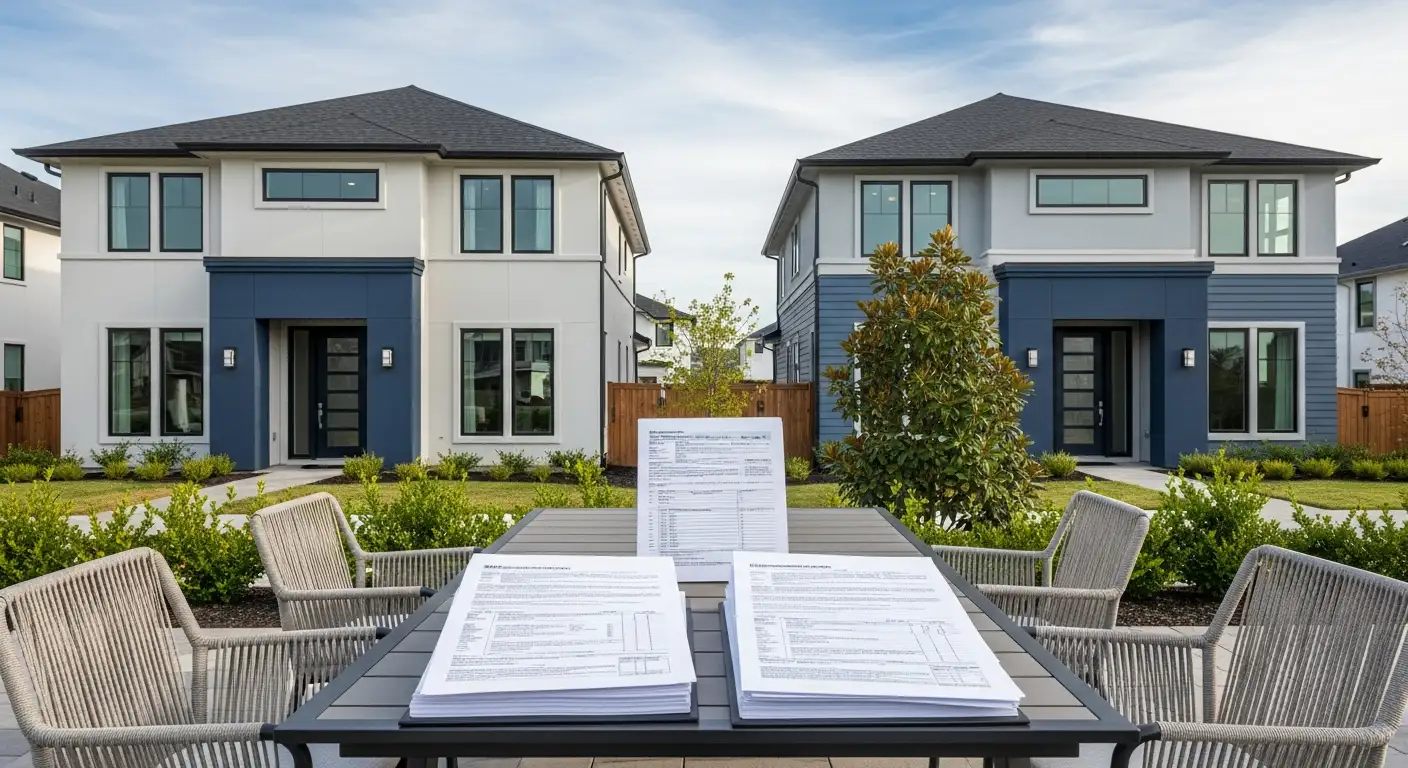Setting the Stage for Homeownership
Purchasing a home is a multi-step journey that culminates in securing a mortgage and closing on the property. Navigating this process efficiently requires understanding each phase from mortgage application through to closing. This article outlines the typical timeline, key stages, and critical factors influencing the home loan to closing experience, providing clarity for prospective homebuyers.
Getting Started: Pre-Approval and Application Process

Online Pre-Approval Process
Obtaining mortgage pre-approval has become a swift and user-friendly step thanks to online systems. Buyers can complete the process in as little as 3 minutes. This quick pre-approval involves a soft credit pull that doesn't affect the credit score and instantly matches buyers with suitable mortgage options.
Importance of Pre-Approval
Having a pre-approval is crucial as it accelerates the homebuying process. Lenders already understand the buyer's financial profile, which reduces delays during later steps. Also, it helps buyers set a realistic budget and strengthens their negotiating position during offers.
Mortgage Application Steps
Once an offer is accepted, the borrower submits a formal mortgage application. This step can be completed in about an hour either online or in person. The application collects detailed financial information and initiates the loan approval process.
Documentation Requirements
During the application stage, borrowers provide important documents such as pay stubs, W-2 forms, bank statements, tax returns, and information on assets and liabilities. Accurate and timely submission of these documents helps avoid delays and meets lender qualification standards.
Loan Processing: From Inspection to Underwriting

Home Inspection
The home inspection is an early and crucial step in the loan processing phase. Typically conducted within the first week, it assesses the structural integrity and functioning systems of the home. This inspection can reveal necessary repairs or issues that may influence negotiations or even the buyer’s decision to proceed.
Appraisal Process and Timing
Following the inspection, the appraisal usually takes place within the first two weeks of loan processing. The assigned appraiser evaluates the home's market value to ensure it supports the loan amount requested by the buyer. Appraisal timelines can span up to 7 days, and delays or low appraisals might lead to renegotiations or require additional cash from the buyer.
Title Search and Insurance
Carried out concurrently with appraisal tasks, the title search and insurance process typically lasts 1 to 2 weeks. This step verifies clear ownership of the property, checks for liens, judgments, or unpaid taxes, and ensures the buyer receives a clean title. Obtaining title insurance protects both buyer and lender against potential future claims on the property.
Underwriting Review and Timing
Underwriting is the comprehensive review stage where lenders scrutinize the borrower's financial health, credit information, employment verification, and documentation gathered for the loan. This process can take 10 to 15 days and often involves requests for additional information. Any financial changes made during underwriting can cause delays, so maintaining stability is critical.
These sequential steps of inspection, appraisal, title work, and underwriting form the backbone of the loan processing period. Each component must be completed thoroughly and efficiently to maintain the overall loan closing timeline, often targeted between 30 and 45 days from application to closing.
Critical Documentation and Disclosures During the Loan Stage

Loan Disclosures and Their Importance
Loan disclosures play a vital role in the mortgage process by ensuring transparency and providing borrowers with necessary information about their loan terms. Shortly after applying, borrowers receive a Loan Estimate detailing costs, interest rates, payment schedules, and other loan terms. This document helps buyers understand potential financial obligations early on.
Gathering Income and Asset Information
During the loan stage, borrowers must submit comprehensive documentation that verifies their financial standing. This typically includes pay stubs, W-2 forms, recent tax returns, bank statements, and records of assets and liabilities. These documents allow lenders to assess income stability, evaluate debt-to-income ratios, and verify the ability to make payments.
Loan Estimate and Closing Disclosure
The Loan Estimate is provided within three days of the mortgage application, giving borrowers an overview of expected costs. Later in the process, about three days before closing, borrowers receive a Closing Disclosure outlining the finalized terms and all closing costs. This disclosure ensures they are fully informed before signing loan documents.
Three-Day Review Period
Borrowers are required to review the Closing Disclosure for at least three business days before the closing date. This mandatory waiting period provides time to verify all details and address any questions or concerns with the lender, preventing surprises and ensuring a smooth closing process.
Final Steps Before Closing: Walkthrough and Preparing for Closing Day
When Does the Final Walkthrough Occur and What Is Its Purpose?
The final walkthrough typically takes place 24 to 48 hours before the closing day. This short inspection, usually lasting 1 to 4 hours, allows buyers to verify the condition of the property and confirm that any agreed-upon repairs have been completed satisfactorily. It is the buyer's last opportunity to ensure the home aligns with expectations before officially taking ownership.
Why Is Reviewing the Closing Disclosure Important?
Buyers receive the Closing Disclosure at least three days before closing, providing a detailed overview of the loan terms, closing costs, and final payment amounts. Careful review is essential to confirm that all financial details are accurate and to avoid any unexpected surprises. This mandatory review period enhances transparency and gives buyers time to ask questions or address discrepancies with their lender.
How Is Closing Day Scheduled and What Happens?
Closing day is typically scheduled once all pre-closing conditions are met and the lender issues final approval. This day generally only takes a few hours during which buyers sign all necessary legal documents, pay down payments and closing costs, and finalize loan funding. Once completed, ownership transfers, and the buyer receives the keys to their new home. Coordination between the lender, title company, and all parties involved ensures a smooth and timely closing.
Maintaining responsiveness during these final steps and being well-prepared can help prevent delays and ensure a successful transition into homeownership.
Closing Day: Signing, Funding, and Home Ownership
Signing Legal Documents
Closing day marks the final step in the homebuying journey where buyers and sellers come together to sign numerous legal documents. These include the mortgage agreement, promissory note, the closing disclosure detailing the loan terms and closing costs, and the settlement statement. The signing formalizes the borrower's commitment to repay the loan under the agreed terms.
Fund Transfer Process
After signing, the lender disburses funds to cover the down payment, closing costs, and loan amount. This financial transaction officially settles the purchase, transferring money from the lender or the buyer’s escrow account to the seller. The process is typically completed on the same day, ensuring a smooth transition toward ownership.
Key Handover
Once funds are transferred and documents signed, ownership is legally transferred to the buyer. The new homeowner receives the keys to the property on closing day, symbolizing possession and control of their new home.
Post-Closing Homeowner Advice
After closing, homeowners should securely store all important documents related to the purchase and mortgage. It is also wise to promptly set up utilities, update insurance policies, and plan routine home maintenance to protect their investment. Staying organized post-closing helps prevent issues and ensures a smooth start in the new home.
Factors Influencing Timeline and Tips to Avoid Delays
What Are Common Causes of Closing Delays?
Several issues can slow down the mortgage closing process. Financing problems, such as difficulties in loan approval or last-minute financial changes, are frequent culprits. Title problems, including unresolved liens or judgments, often prolong title searches and insurance finalization. Disputes over property appraisal or findings from the home inspection can result in renegotiations or additional repairs, causing further delays. Document errors or omissions during underwriting and closing also contribute to setbacks.
How Do Loan Types and Contingencies Affect the Timeline?
The kind of home loan plays a role in closing speed. For instance, purchase loans usually take about 12 days longer to close than refinance loans. Different loan types have varying average closing times: Conventional purchase loans can take around 47 days, FHA purchase loans about the same, while refinance loans under FHA or conventional programs usually close faster. Contingencies within an offer, such as inspection or financing conditions, may extend the timeline as these must be resolved before proceeding.
Why Are Responsiveness and Financial Stability Important?
Prompt responses to lender or agent requests can significantly reduce processing time. Timely submission of requested documents and quick scheduling of inspections or appraisals help keep things on track. Financial stability matters because changes like new debts, job shifts, or large purchases during underwriting can interrupt or restart the approval process. Maintaining steady employment, a good credit profile, and avoiding financial changes during underwriting is crucial for a smooth timeline.
What Benefits Do Local Lenders Provide in Keeping Schedules?
Working with a local lender offers personalized service and faster communication. Local lenders understand market nuances, have established relationships with nearby appraisers, title companies, and real estate agents, which often speeds transaction steps. They tend to be more agile and can assist buyers facing tight deadlines, offering a streamlined process compared to national or online-only lenders.
Mastering the Mortgage Timeline
Understanding each phase from pre-approval to closing can help buyers anticipate timelines and avoid common pitfalls. Prompt responsiveness, thorough documentation, and coordination with lenders and agents streamline the process. Informed buyers who prepare ahead and stay engaged throughout each stage enhance their chances of timely closing and smooth transition to homeownership.
References
- Your timeline for the homebuying process
- How Long Does It Take to Close on a House?
- From Application to Keys: Your Speedy Mortgage Timeline ...
- Timeline: Know before you owe: Mortgages
- Home Buying Timeline: From Pre-Approval to Closing
- The Timeline of a Mortgage Loan - First Bank & Trust Company
- Mortgage Guide: What's the Average Time to Close on a ...
Latest Blog


Get Pre-Approved Today
Start your secure online application now so you can get pre-approved for a mortgage (and close on your dream home) quickly within 5 minutes.









